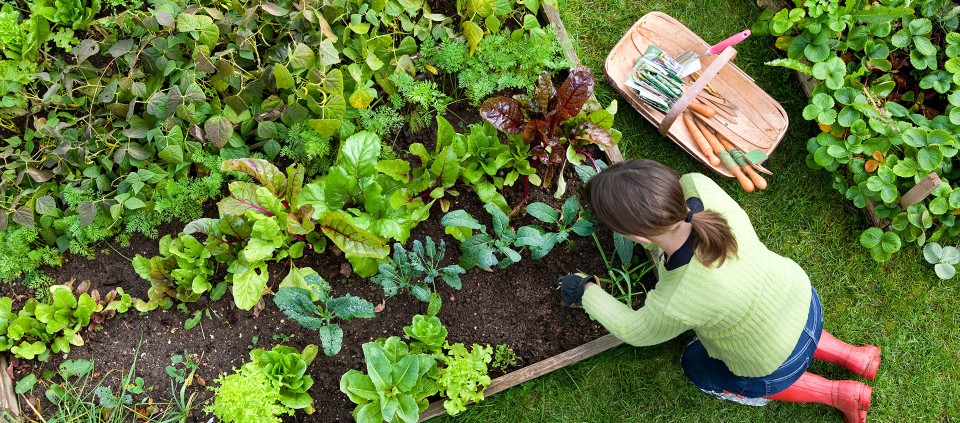Gardening in the Fall

Just because summer has come to a close doesn’t mean that you need to close up your backyard garden. Many homegrown vegetables can survive—and even thrive—over the cold winter months. Kripalu presenter and nutritionist John Bagnulo, PhD, MPH,who farms organically at his home in Maine, offers his tips for ensuring a bountiful spring.
Start simple. Beets and carrots are by far the most low-maintenance vegetables you can plant now and enjoy in the spring. My favorite varieties are Chioggia for beets and Mokum for carrots. Simply work a good amount of compost or aged cow manure into the ground (a container works well for small spaces). Manure is my personal favorite fertilizer, as compost means different things today than it did 20 years ago when I started gardening. Now, the demand is so great that producers are cutting corners and many composts are not well developed.You could also try planting some berries. Strawberries planted in the fall can be ready the following spring. So can blueberries, though it generally takes blueberries much longer to truly become productive.
Plant wisely. Plant seeds about 1/2" deep and water them well. After the weather turns really cold, cover them with a thick layer of straw or chopped straw—not leaves, as those can suffocate the growth below when they get packed down with the first couple of rains or snowfalls. This cover will keep the frost from pushing the ground up and out, which exposes young plants or seeds.
Look for spring. As soon as the really cold weather has passed (late March in Maine, early March in a place like Boston), pull back the straw. In a few weeks you’ll have the sweetest carrots or beets imaginable—so long as you’ve planted the right variety!
Or don’t even wait that long! Many great greens—including Swiss chard, beet greens, kale, collard greens, and mustard greens, as well as spinach and bok choy—have the ability to “over-winter,” which means survive the winter and then start vigorous growth again in the early spring. You just have to protect them properly. If temperatures fall below freezing, create a protective frame by surrounding plants with bales of hay and covering them with an old storm window. Use a light frost protection, such as Agribon, a very thin layer of fabric that lets through about 80 percent of light, or simply cover the plants with straw (but not hay). Uncover when temperatures rise above freezing.
Even easier … Plant some mache, a wonderful and very nutritious salad green that will grow even in the dead of winter with little to no protection. It’s incredible.
Be organic. I think we should grow without chemicals whenever possible. It reflects our outlook on the world around us; chemicals, meanwhile, can significantly reduce the antioxidant value of fruits and vegetables. And it’s so easy! Just use well-aged cow manure and you’re 99 percent there. You can buy this in bags (I like the brand Moo Doo.) Mix it in with your topsoil—away from older homes that may shed lead paint into the ground—and control pests with a diluted solution of soap and water or a garlic spray.
John Bagnulo, MPH, PhD, is a naturalist, nutritionist, farmer, and assistant professor who teaches courses at universities and wellness centers.
Full Bio and Programs